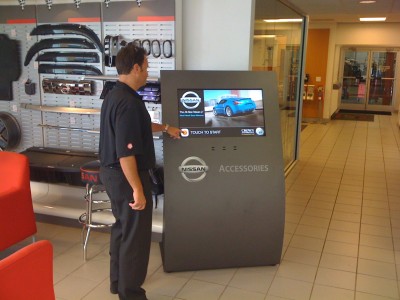Hazardous substances
In 2008, a scientific article based on research by Michael Prather, a professor at the University of California, Irvine (UCI), set off alarm bells in the mainstream press with regard to NF3, a gas used in the production of LCD panels, integrated circuits and other products like solar panels. The article suggested the gas had thousands of times the effect on the atmosphere as a comparable quantity of carbon dioxide (CO2) would.
Another article later that same year, however, found the press had overhyped the findings and distorted the environmental impact of NF3. It pointed out only a small quantity of the gas is released into the atmosphere. In fact, Prather agreed with this assessment.
“It’s not a big deal by itself,” he says. “We’re looking at less than 0.5 per cent of the impact of CO2. It’s not the most important thing, though it should be added to the market ‘basket’ and monitored.”
Hazardous substances in digital signage players and fluorescent lights are legitimate concerns. Media players use components with lead and cadmium content, while fluorescent bulbs contain mercury.
With that in mind, the European Union (EU) has established the Restrictions on Hazardous Substances (RoHS) Directive, which restricts the use of six hazardous materials, including lead and cadmium. Similar local restrictions around the world have made—and will continue to make—digital signage greener.
Disposal and waste
One way to minimize the environmental impact of digital signage networks is to extend the lives of their components. Choosing longer-life backlighting options, including LED technology, and limiting monitor operations to times when the business or other institution is actually open can help lengthen a display’s useful life.
Additionally, any old displays can be donated to charitable organizations—not only to benefit the needy, but also to keep the displays out of landfills. (Many communities today would not accept monitors and computers as waste anyway.)
Given the fragility of screens and media players, proper packing materials are essential for safe transportation and further use. So, when ensuring a digital signage system is as environmentally friendly as possible, recycled packing materials should be used—and recycled again afterwards.
Striking a balance
In 2010, the Screen Forum, an independent working group that shares best practices for digital signage, released a list of green principles as guidelines for companies working in the sector. This list aims to achieve balance in several ways: between environmental impact and performance; between achieving communications goals and being sympathetic to nearby landmarks; and between fulfilling commercial purposes and promoting community-minded environmental awareness.
Balancing performance and environmental impact touches upon many phases in digital signage network rollouts and operations. The Screen Forum seems to focus on drawing a distinction between sufficiency and saturation, by limiting the number of components and displays in a network, along with its power requirements.
Next, achieving balance between performance and placement near landmarks brings to mind the stark contrast between municipalities that ban digital billboards along their highways to the current state of the main strip in Las Vegas, Nev. The Screen Forum admonishes the industry to balance the legitimate desire to convey messages via digital signage with the need to appreciate that signage’s surroundings.
Finally, acknowledging the opportunity to use the network—even if only periodically—to raise public awareness of environmental concerns recognizes there is more to the medium than hardware, software and narrowcasting messages. The concept of public service announcements (PSAs) can be transplanted from the TV industry, even though most digital signage networks have no government-mandated obligation to fulfil.







